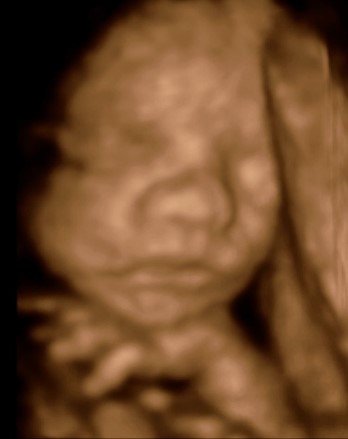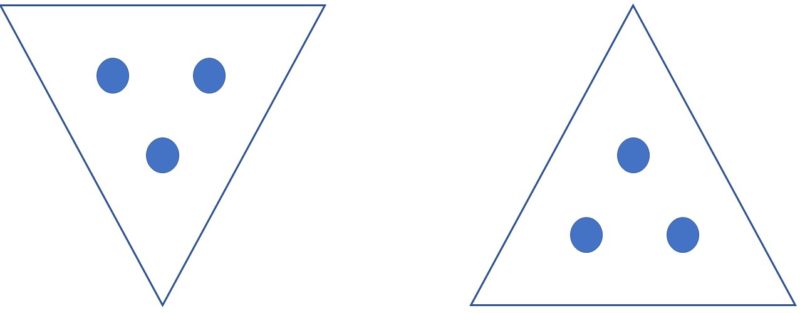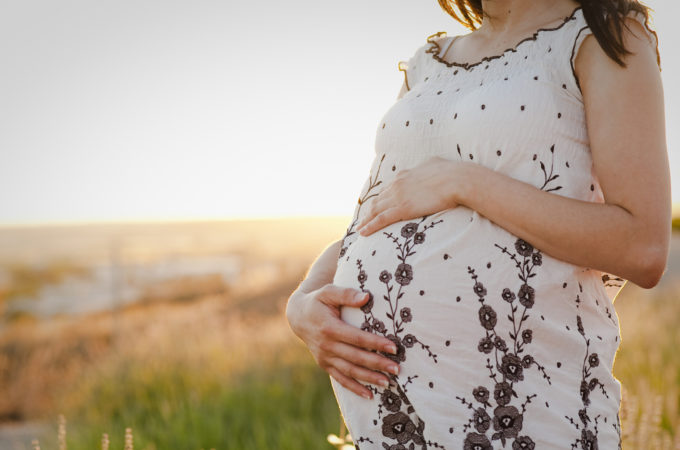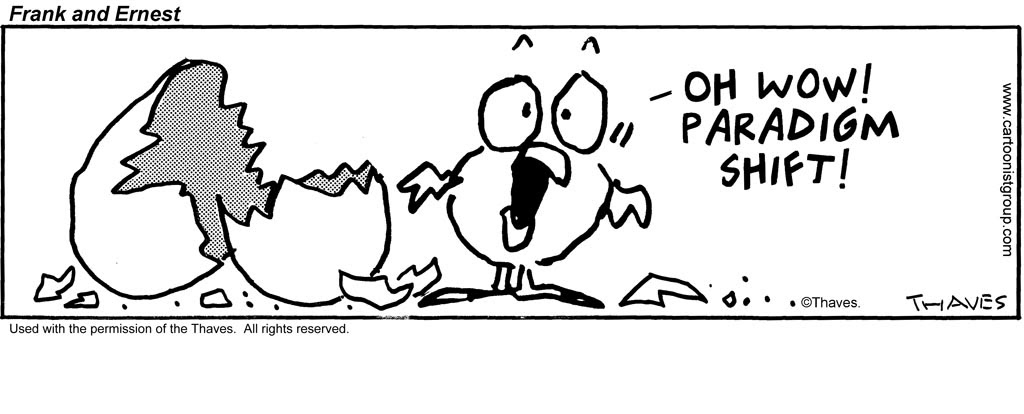Did you know there is a two-way window in a mother’s womb?
For years researchers have peered through this window, often using ultrasound and other techniques. They have found that the baby’s sense of touch, taste, smell, and hearing are developing while in the womb. A pre-born baby learns to distinguish its mother’s voice and even begin to learn her language!
Researchers have concluded that newborn babies can distinguish between the mother’s language and a foreign tongue. They also develop music preferences in the womb. Listening to her mother’s music, the baby responds to the rhythms. He also responds to the pace of a book being read to him. She learns something about the mother’s culinary preferences through the spices in her food as the baby drinks the amniotic fluid. She even learns the smell of her mother through the amniotic fluid. The baby is taking in and processing information while in her mother’s womb.
Now researchers have turned their attention to the sense of sight. And to this incredible question: can a baby see out of the womb?
 Researchers can peer into the womb through a window. Can the infant peer out through the same window? But I’m getting ahead of myself.
Researchers can peer into the womb through a window. Can the infant peer out through the same window? But I’m getting ahead of myself.
From birth the baby begins to explore his world with his eyes. The eyes are gathering all sorts of visual information to help the baby develop. At birth a child has a visual acuity of 20/400. Later in life, this would be considered severe visual impairment. But her first focal point is only 8 to 10 inches away. What does the baby first see? The face of his mother when breastfeeding.
This mother-and-child intimacy reflects a larger truth about human beings made in the image of God: we were made for intimacy. Before the creation of the world God existed as three persons, Father, Son and Holy Spirit. Before the creation of the world there was community, communion, and communication.
Humans are designed for relationship
We are made in the image of God, made for relationships, for communion. The Hebrew word yada reflects this. This word means face-to-face. God sees us face-to-face. A man and a woman see each other face-to-face. And the mother and her baby see each other face-to-face.
When a baby comes into the world she bonds with her mother. This is an intense bond with physical, emotional, and spiritual dimensions: skin-to-skin, face-to-face, soul-to-soul.
The mother’s heartbeat comprises one of the major influences in a baby’s life. After the baby is born where does she want to be? Near the mother’s heart.
When a newborn baby is placed on the mother’s tummy, without any activity on the part of the mother or nurse, within a half hour the baby will make her way from the mother’s tummy to the sound of her mother’s heart. When she finds her mother’s heart, she finds her mother’s breast and the nourishment that comes from that. What an incredible, beautiful picture.
 Where is the mother looking when she’s breastfeeding her baby? At her toenails to see if she needs a pedicure? At the cobwebs on the ceiling? Is she thinking, “I need to get the broom and get rid of those cobwebs”? No. She’s thinking about her baby. She’s looking into the face of her baby. Into the eyes of her baby. Because the eyes are the window of the soul.
Where is the mother looking when she’s breastfeeding her baby? At her toenails to see if she needs a pedicure? At the cobwebs on the ceiling? Is she thinking, “I need to get the broom and get rid of those cobwebs”? No. She’s thinking about her baby. She’s looking into the face of her baby. Into the eyes of her baby. Because the eyes are the window of the soul.
When the baby’s eyes focus for the first time, 8 to 10 inches away, what does he see? His mother’s face. He looks into his mother’s eyes. Here we have yada, intimacy, face-to-face. This is the maternal and infant bonding.
A baby begins to bond with mom while still in the womb
But it’s important to note that this bonding actually begins in the womb. The baby hears the mother’s heart and that bonding begins.
But doctors and researchers are finding another dimension to that bonding. It’s common knowledge in pediatrics that newborn babies show a powerful interest in faces. A baby will inevitably turn to a face more than to any other object. And now researchers have discovered that this interest may begin in the womb.
Scientists are discovering that the baby can see out of the womb. Dr. Vincent Reid of Lancaster University in England worked with 39 women who were 34 weeks into gestation. His research was reported in the journal, Current Biology.
 The researchers projected two images of three-dot triangles into the wall of the uterus. One triangle could be considered a very rough facsimile of the human face. The other was the same pattern upside down. Using 4D ultrasound images, the researchers watched as the babies consistently turned their heads more readily toward the face-like image. (The same behavior pattern has been observed in post-birth babies for years.) The researchers concluded that the preference of the baby for human faces begins in the womb.
The researchers projected two images of three-dot triangles into the wall of the uterus. One triangle could be considered a very rough facsimile of the human face. The other was the same pattern upside down. Using 4D ultrasound images, the researchers watched as the babies consistently turned their heads more readily toward the face-like image. (The same behavior pattern has been observed in post-birth babies for years.) The researchers concluded that the preference of the baby for human faces begins in the womb.
Dr. Reid and his team drew at least two related conclusions.
- It’s possible for scientists to “explore visual perceptions and cognition in babies before they are born.”
- Babies in the third trimester can process perceptual information, i.e. information beyond merely hearing, taste and smell.
Wow! The window in the womb is two way! This gives deepened meaning to Psalm 67:1, “May God be gracious to us and bless us and make his face shine upon us” (NIV). One scholar writes, “The face identifies the person and reflects the attitude and sentiments of the person. As such, [the face] can be a substitute for the self or the feelings of the self.” (M. Dahood in The Theological Wordbook of the Old Testament, by R. Laird Harris, Gleason L. Archer Jr., Bruce K. Waltke, originally published by Moody Press of Chicago, Illinois. Copyright © 1980)
How glorious God has made female and mothers. How powerful is the maternal heart he has given mothers. What a wonder it is to be human. The development of a baby in the womb is a common miracle.
In this day and age, when the culture is diminishing the distinction between male and female, when women are being punished by society for being mothers, may the truth of the two-way window in the womb be a source of encouragement and wonder to women and mothers, to men and fathers.
- Darrow Miller






